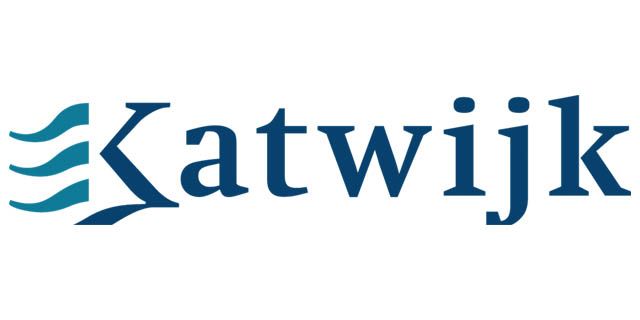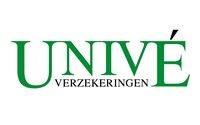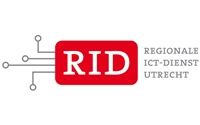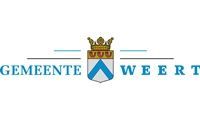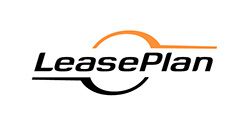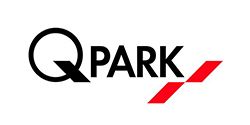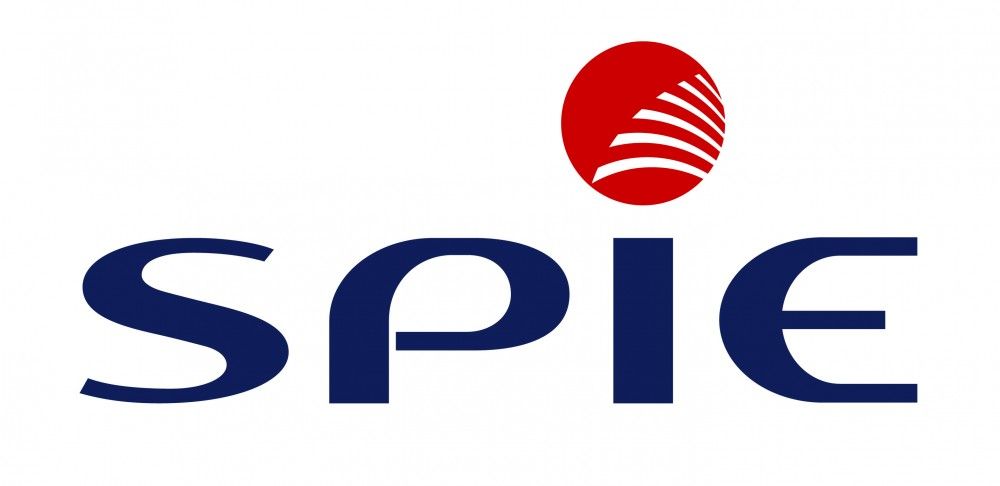Cursusbeschrijving
In deze cursus doen deelnemers praktijkervaring op met Windows 8. De cursus biedt instructies voor het installeren, upgraden en licenseren van Windows 8. Deelnemers leren om opslag te beheren via het aanmaken van eenvoudige, ‘gevlekte’ en ‘gestreepte’ volumes en om de prestaties van het bestandssysteem te optimaliseren. Daarnaast leren ze om de beschikbare schijfruimte te beheren door het gebruik van quota. De deelnemers leren ook werken met Windows-hulpmiddelen en -diensten voor de herkenning van prestatie- en betrouwbaarheidsproblemen en voor het oplossen hiervan.
De cursus behandelt het configureren van netwerken met IPv4 en IPv6, verbindingen met draadloze netwerken en het gebruik van de netwerkfuncties in Windows 8 voor de oplossing van netwerkproblemen,. Deelnemers leren ook preventieve maatregelen te nemen die samenwerken om computers te beschermen tegen beveiligingsrisico’s.
De cursus gaat vervolgens in op de functies rondom bestands- en mappenbeheer, zoals bestandspermissies, de compressie van bestanden en mappen en de configuratie van gedeelde mappen. Deelnemers leren ook om printers te installeren en te beheren. Daarnaast krijgen ze een overzicht van de SkyDrive-functionaliteit en van de procedures voor het installeren en configureren van applicaties, waaronder die uit de Windows Store.
De cursus gaat ook in op de basis van het werken met virtuele machines via de Client Hyper-V-omgeving in Windows 8.
Deelnemers doen kennis op over functies als Virtual Private Networks (VPN’s) en DirectAccess, waarmee mobiele gebruikers toegang hebben tot interne systeembronnen wanneer zij niet op kantoor zijn. Tijdens de cursus zullen deelnemers gebruik maken van Windows PowerShell 3.0 en van de bijbehorende grafische gebruikersomgeving (GUI) voor de configuratie en het beheer van het systeem. Deelnemers zullen ook gebruik maken van de scripting-editor voor het aanmaken en testen van PowerShell-scripts voor het beheer van het systeem.
{tab Doelgroep}
Deze cursus is bedoeld voor IT-professionals die ondersteuning bieden of de configuratie verzorgen voor Windows 8-computers, -apparaten en -gebruikers en van de bijbehorende netwerken en beveiliging. De netwerken waarmee deze professionals doorgaans werken zijn opgezet als omgeving op basis van een enkel domein of op peer-to-peer-basis, met toegang tot internet en cloud-diensten. De IT-professional kan adviseur zijn, fulltime technisch ondersteunend medewerker voor desktops of een IT-generalist die het beheer van Windows 8-computers en -apparaten uitvoert als onderdeel van bredere technische verantwoordelijkheden. De cursus is ook geschikt voor studenten die hun certificaat willen behalen in het examen 70-687 Windows 8-configuratie.
{tab Voorkennis}In addition to their professional experience, students who attend this training should already have the following technical knowledge:
- Networking fundamentals, including Transmission Control Protocol /Internet Protocol (TCP/IP), User Datagram Protocol (UDP), and Domain Name System (DNS)
- Microsoft Active Directory Domain Services (AD DS) principles and fundamentals of AD DS management
- Understanding of the Public Key Infrastructure (PKI) components and working knowledge of the fundamentals of Active Directory Certificate Services (AD CS)
- Microsoft Windows Server 2008 or Windows Server 2008 R2 fundamentals
- Microsoft Windows Client fundamentals; for example, working knowledge of Windows XP, Windows Vista, and/or Windows 7
- Fundamentals of management and experience using the Microsoft Office 2010 system or the Microsoft Office 2007 system
- Windows Automated Installation Kit (WAIK) components including Windows PE, Windows SIM, VAMT, ImageX, USMT, and DISM concepts and fundamentals
Na het volgen van deze cursus is de cursist in staat om deel te nemen aan het examen 70-687.
{tab Vervolgcursus} Na het afronden van de M20687 bent u gerechtigd om deel te nemen aan de cursus M20688 Managing and Maintaining Windows 8 {tab Inschrijven}
Westhaghe Training & Advies biedt voor de cursus M20687 een open rooster aan in Amsterdam en Utrecht. Bekijk in ons open rooster de trainingsdata voor deze cursus.
{/tabs} {slider Cursusinhoud|closed}
Module 1: Installing Windows 8
This module will introduce the student to some new features of Windows 8, provide guidance on installing Windows 8, and introduce them to the Windows 8 licensing environment.
Lessons
- Introducing Windows 8
- Preparing to Install Windows 8
- Installing Windows 8
- Automating the Installation of Windows 8
- Activating Windows 8
Lab : Installing Windows 8
- Planning to Install Windows 8
- Performing a Clean Installation of Windows 8
Lab : Performing an Unattended Installation of Windows 8
- Configuring an Answer File
- Using an Answer File to Install Windows 8
After completing this module, students will be able to:
- Describe the different editions of Windows 8.
- Prepare a computer for Windows 8 installation.
- Install Windows 8.
- Automate the Installation of Windows 8.
- Explain Windows 8 Licensing and Activation.
Module 2: Upgrading and Migrating to Windows 8
This module examines the upgrade process, identifies different methods for upgrading and migrating, and introduces you to the tools and processes used to perform an upgrade or migration.
Lessons
- Upgrading to Windows 8
- Migrating to Windows 8
- Migrating User Data and Settings
Lab : Migrating to Windows 8
- Backing Up Important User Data and Settings
- Restoring User Data and Settings to a Target Computer
- Verifying Successful Migration of User Data and Settings
After completing this module, you will be able to:
- Describe the options and processes for upgrading to Windows 8.
- Describe the options and processes for migrating to Windows 8.
- Identify important settings and data to migrate and explain how to migrate them.
Module 3: Managing Disks and Device Drivers
This module explains how to manage disk, including simple, spanned, or striped volumes. It also explains how to optimize file-system performance, and how to use disk quotas to manage available disk space on installed volumes.
Lessons
- Managing Disks, Partitions, and Volumes
- Maintaining Disks, Partitions, and Volumes
- Working with Virtual Hard Disks
- Installing and Configuring Device Drivers
Lab : Managing Disks
- Creating Volumes
- Configuring Quotas
- Working with VHDs
Lab : Configuring Device Drivers
- Installing Device Drivers
- Managing Device Drivers
After completing this module, you will be able to:
- Manage local hard disks.
- Maintain local hard disks.
- Use VHDs.
- Install and configure device drivers.
Module 4: Configuring and Troubleshooting Network Connections
This module explains how to configure and troubleshoot Windows 8 networking features including both TCP/IP version 4 and TCP/IP version 6.
Lessons
- Configuring IPv4 Network Connectivity
- Configuring IPv6 Network Connectivity
- Implementing Automatic IP Address Allocation
- Implementing Name Resolution
- Troubleshooting Network Connectivity
Lab : Configuring Network Connection
- Enabling Automatic IPv4 Configuration
- Configuring IPv4 Manually
Lab : Troubleshooting Network Connectivity
- Creating a Simulated Network Connectivity Problem
- Resolving a Network Connectivity Problem
After completing this module, students will be able to:
- Configure a local area network (LAN) connection with IPv4.
- Configure a LAN connection with IPv6.
- Implement automatic IP address allocation.
- Implement name resolution.
- Troubleshoot common network-related problems.
Module 5: Implementing Wireless Network Connections
This module describe the wireless network technologies available, the procedures for configuring wireless network components, and the Windows 8 elements that are necessary to access wireless networks.
Lessons
- Overview of Wireless Networks
- Implementing a Wireless Network
Lab : Planning the Implementation of Wireless Network Connections
- Planning a Wireless Network
- Determining the Cause of Wireless Network Problems
- Configuring a Wireless Network Policy
After completing this module, you will be able to:
- Describe the standards and technologies related to wireless network connections.
- Configure a wireless network connection.
Module 6: Implementing Network Security
This module explains how to formulate a strategy to protect your computers by using User policies, anti-virus software, encrypted network traffic, and other protective measures. It also explains how to optimize the appropriate Windows network security features, such as the Windows Firewall and Windows Defender.
Lessons
- Overview of Threats to Network Security
- Configuring Windows Firewall
- Securing Network Traffic
- Configuring Windows Defender
Lab : Configuring Inbound and Outbound Firewall Rules
- Creating an Inbound Firewall Rule
- Creating An Outbound Firewall Rule
Lab : Configuring Connection Security Rules
- Creating and Configuring Connection Security Rules
Lab : Configuring Host-Based Virus and Malware Protection
- Configuring Windows Defender
After completing this module, students will be able to:
- Describe the threats to network security.
- Explain how to configure Windows firewall.
- Explain how to secure network traffic.
- Explain how to configure Windows Defender.
Module 7: Configuring File Access and Printers on Windows 8 Clients
This module provides the information and tools you need to manage access to shared folders and printers. Specifically, the module describes how to share and protect folders, configure folder compression, and how to install, configure, and manage printers. Additionally, this module introduces the SkyDrive functionality, and describes how to set up NTFS folder permissions.
Lessons
- Managing File Access
- Managing Shared Folders
- Configuring File Compression
- Managing Printers
- Overview of SkyDrive
Lab : Configuring File Access
- Creating a Shared Folder for All Users
- Creating a Shared folder for the Marketing Group
Lab : Configuring Printers
- Creating and Sharing a Local Printer
After completing this module, students will be able to:
- Describe file access management.
- Describe shared folders management.
- Describe how to configure file compression.
- Explain how to configure and manage printers.
- Describe the purpose and functionality of SkyDrive.
Module 8: Securing Windows 8 Desktops
This module explains the features of Windows 8 that help you maintain a secure computer desktop environment.
Lessons
- Authentication and Authorization in Windows 8
- Implementing Group Policy Objects
- Securing Data with EFS and BitLocker
- Configuring User Account Control
Lab : Implementing Local Group Policy Objects
- Creating Multiple Local Group Policy Objects
- Testing the Application of the Local Group Policy Objects
Lab : Securing Data
- Protecting Files with EFS
Lab : Configuring and Testing UAC
- Modifying UAC Prompts
After completing this module, you will be able to:
- Describe authentication and authorization in Windows 8.
- Describe how to use local Group Policy Objects (GPOs) to configure security and other settings.
- Select a suitable disk encryption method.
- Configure User Account Control.
Module 9: Configuring Applications
This module explains how to install and configure applications, which include both desktop apps and Windows Store apps. Lessons
- Install and Configure Applications
- Managing Apps from the Windows Store
- Configuring Internet Explorer Settings
- Configuring Application Restrictions in the Enterprise
Lab : Configuring Internet Explorer Security
- Configuring Internet Explorer
Lab : Configuring AppLocker
- Configuring AppLocker Rules
- Testing the AppLocker Rules
After completing this module, you will be able to:
- Install and configure applications.
- Install and manage applications from the Windows Store.
- Configure and secure Microsoft Internet Explorer.
- Configure application restrictions.
Module 10: Optimizing and Maintaining Windows 8 Client Computers
This module explains the tools that you can use to determine the source of performance and reliability issues. It also describes the steps to take to improve system performance and reliability.
Lessons
- Optimizing the Performance of Windows 8
- Managing the Reliability of Windows 8
- Managing Windows 8 Updates
Lab : Optimizing Windows 8 Performance
- Creating a Performance Baseline
- Introducing Additional Workload
- Measuring System Responsiveness Under Load
Lab : Maintaining Windows Updates
- Configuring Windows Update
After completing this module, students will be able to:
- Describe how to optimize Windows 8 performance.
- Explain how to manage Windows 8 reliability.
- Explain how to manage and maintain Windows 8 updates.
Module 11: Configuring Mobile Computing and Remote Access
This module explains how to identify and configure appropriate mobile computer access, specifically DirectAccess and VPN. Additionally, this module describes various power options, and device synchronization capabilities that students can configure.
Lessons
- Configuring Mobile Computers and Device Settings
- Configuring VPN Access
- Configuring Remote Desktop and Remote Assistance
- Overview of DirectAccess
Lab : Configuring a Power Plan
- Creating and Configuring a New Power Plan
Lab : Implementing a VPN Connection
- Creating and Testing a VPN Connection
Lab : Implementing Remote Desktop
- Configuring a Remote Desktop Connection
After completing this module, students will be able to:
- Configure Windows 8 settings that are applicable to mobile computing devices.
- Enable and configure VPN access.
- Enable and configure Remote Desktop and Remote Assistance.
- Describe when and how to use DirectAccess to address remote users’ requirements.
Module 12: Implementing Hyper-V
This module introduces the student to Client Hyper-V in Windows 8, and explains the fundamentals of working with virtual machines in the Client Hyper-V environment.
Lessons
- Overview of Hyper-V
- Creating Virtual Machines
- Managing Virtual Hard Disks
- Managing Snapshots
After completing this module, students will be able to:
- Describe Hyper-V.
- Explain the process for creating and working with virtual machines.
- Identify key aspects of working with virtual disks.
- Understand and manage snapshots with Hyper-V.
Module 13: Troubleshooting and Recovering Windows 8
This module explains how to use the included tools to maintain a backup of important data files and additional tools that can help you to recover a computer that will not start, or starts with errors.
Lessons
- Backing Up and Restoring Files in Windows 8
- Recovery Options in Windows 8
Lab : Recovering Windows 8
- Exploring Windows 8 Recovery Options
- Introducing a Simulated Problem
- Resolving the Problem
After completing this module, students will be able to:
- Describe how to back up and restore files in Windows 8.
- Describe how to recover a Windows 8 computer.
Module 14: Using Windows PowerShell
This module explains how to use Windows PowerShell, its (GUI), and scripting editor to write scripts that automate repetitive tasks, and thereby increase consistency and productivity.
Lessons
- Introduction to Windows PowerShell 3.0
- Windows PowerShell Remoting
- Using Windows PowerShell Cmdlets
After completing this module, students will be able to:
- Describe the basic features of Windows PowerShell 3.0.
- Describe Windows PowerShell Remoting.
- Describe the use of Windows PowerShell cmdlets
After completing this course, students will be able to:
- Plan and perform the installation of Windows 8.
- Install Windows 8 on computers that are running an existing operating system.
- Configure disks, partitions, volumes, and device drivers in a Windows 8 system.
- Configure network connectivity.
- Install, configure, and maintain wireless network connections.
- Implement Windows 8 technologies to secure network connections.
- Share files and printers.
- Implement tools and technologies that can help secure Windows 8 desktops.
- Configure and control applications in Windows 8.
- Optimize and maintain Windows 8 based computers.
- Configure mobile computer settings and to enable remote access.
- Create and configure virtual machines in Hyper-V for Windows 8 and describe how to use it to support legacy applications.
- Determine how to recover Windows 8 from various failures.
- Describe how to use Windows PowerShell to manage Windows 8.
Excel Training Volgen?
Benieuwd naar de mogelijkheden van een Excel training? Vraag vrijblijvend meer informatie aan en we sturen je binnen 24 uur meer informatie op!
